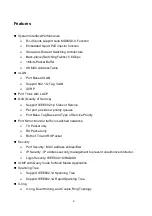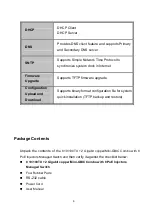
1
Introduction
Power-over-Ethernet (PoE)
eliminates the need to run VAC power to other devices on
a wired LAN. Using Power-over-Ethernet system installers needs to run only a single
Category 5 Ethernet cable that carries both power and data to each device. This allows
greater flexibility in the locating of network devices and significantly decreasing
installation costs in many cases.
There are two system components in PoE—the Power Sourcing Equipment (PSE)
initiates the connection to the second component, and the Powered Device (PD). The
current is transmitted over two of the four twisted pairs of wires in a Category-5 cable.
Power over Ethernet follows the IEEE 802.3af and is completely compatible with existing
Ethernet switches and networked devices. Because the Power Sourcing Equipment
(PSE) tests whether a networked device is PoE-capable, power is never transmitted
unless a Powered Device is at other end of the cable. It also continues to monitor the
channel. If the Powered Device does not draw a minimum current, because it has been
unplugged or physically turned off, the PSE shuts down the power to that port. Optionally,
the standard permits Powered Devices to signal to the PSEs exactly how much power
they need.
The 8 10/100TX + 2 Gigabit copper/Mini-GBIC Combo with 8 PoE Injectors Managed
Switch is the multi-port switch that can be used to build high-performance switched
workgroup networks. It is a store-and-forward device that offers low latency for
high-speed networking. It also features a “store-and-forward “switching scheme. This
allows the switch to auto-learn and store source address in an 8K-entry MAC address
table. The switch is targeted at workgroup, department or backbone computing
environment.
Summary of Contents for GSW-0891
Page 21: ...15 Segment Bridge application...
Page 87: ...81 SNMP V3 configuration interface...
Page 90: ...84 rule Click Apply QoS Configuration interface...
Page 93: ...87 IGMP Configuration interface...
Page 102: ...96 All MAC Address interface...








































